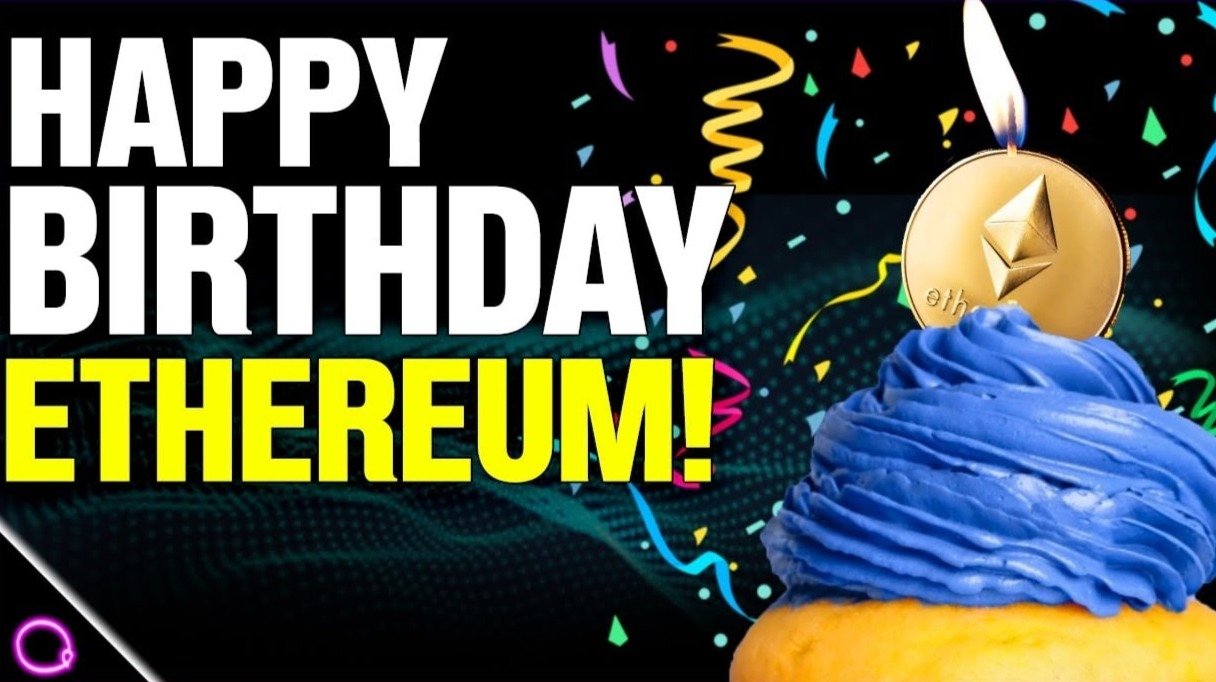Happy 7th Birthday Ethereum

Ethereum (ETH) celebrates it's seventh birthday today given the coins original release date of July 30, 2015. The concept of Ethereum was released in the white paper published two years earlier by a programmer named Vitaly Dmitriyevich "Vitalik" Buterin. The coin would be described in a 25-minute speech at the North American Bitcoin Conference that took place in January of 2014 in Miami given by a 20-year-old Russian born computer geek who had lived in Canada since his parents migrated there when he was six-years-old.
Buterin attended the University of Waterloo where he was a research assistant for cryptographer Ian Goldberg in addition to being a student. He would drop out of the University in 2014 after he was given a $100k grant from the Theil Fellowship allowing him to being working on Ethereum full-time. This turned out to be a pretty good investment.
But why did Buterin want to create decentralized money? Well, we can thank the video game World of Warcraft. Buterin claims his warlock character got nerfed in version 3.1 and the result was the loss of his Siphon Life spell. Thanks to this traumatic experience, along with the introduction of Bitcoin from his father, the roots of Ethereum were being rooted in the young man's mind.
Buterin envisioned something different from Bitcoin (BTC) noting that blockchain technology would be better served by adding functionality besides being simply a store of value. He knew that a more robust programming language used in application development would allow the attachment of real world assets to the blockchain such as real estate and stocks.
In the white paper introduction to Ethereum, after initially discussing Bitcoin, Buterin and his co-writer Gavin Wood laid out their case.
"The intent of Ethereum is to create an alternative protocol for building decentralized applications, providing a different set of tradeoffs that we believe will be very useful for a large class of decentralized applications, with particular emphasis on situations where rapid development time, security for small and rarely used applications, and the ability of different applications to very efficiently interact, are important. Ethereum does this by building what is essentially the ultimate abstract foundational layer: a blockchain with a built-in Turing-complete programming language, allowing anyone to write smart contracts and decentralized applications where they can create their own arbitrary rules for ownership, transaction formats and state transition functions. A bare-bones version of Namecoin can be written in two lines of code, and other protocols like currencies and reputation systems can be built in under twenty. Smart contracts, cryptographic "boxes" that contain value and only unlock it if certain conditions are met, can also be built on top of the platform, with vastly more power than that offered by Bitcoin scripting because of the added powers of Turing-completeness, value-awareness, blockchain-awareness and state."
The rest of the white paper would be broken down into various sections.
The white paper ends with the Conclusion and Notes for Further Reading.
After his presentation at the Miami Bitcoin Conference in 2014, the Ethereum momentum began to grow as a number of crypto enthusiast from Canada who had heard him jumped on board. In a little beach house, the group banged out code. These early followers were not the only believers in Buterin's vision. Others also saw the potential in Ethereum as an $18M funding round in 2014 proved. It wouldn't take much longer for the rest of the world to discover another cryptocurrency that some believe may one day overtake Bitcoin.
After a period of successful testing of the network, the first block of Ethereum was mined and the Ethereum mainnet was launched on July 30, 2015. The rest, as we know now, is history. Well, not quite as that history is still be written right now.
Not one to be satisfied, Buterin is still working to improve the second largest cryptocurrency and contends that Ethereum is only 40% finished at this point. With the upcoming "merge", ETH 2.0 as some call it is moving away from a proof-of-work mechanism to proof-of-stake which is set to take place in September. The final testing phase is kicking off next week before all the transactions move off the current network to the Beacon Chain. Not only will the merge help make Ethereum more environmentally friendly, but it will also become deflationary with fee burns. It will not, however, solve the networks high transaction fees which prevent higher scaling at this point. This is something that needs to be addressed to allow for greater widespread adoption.
It has been an exciting seven years so far for Ethereum and while we have a good idea of what is happening over the next few months the future is still very much unknown. What do you think will happen in the next seven years for Ethereum and will it eventually take over Bitcoin's top spot?
Happy Birthday Ethereum!!!